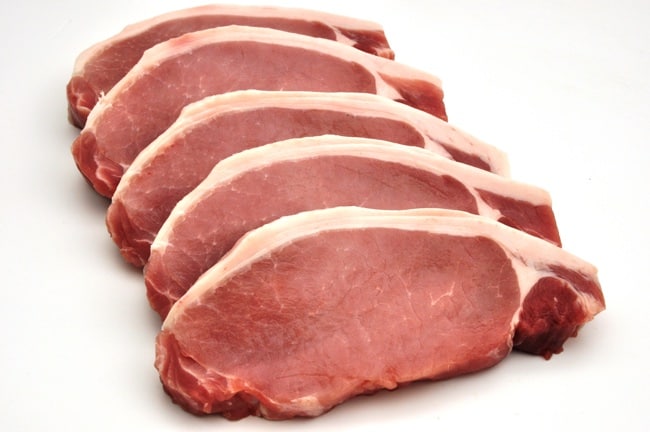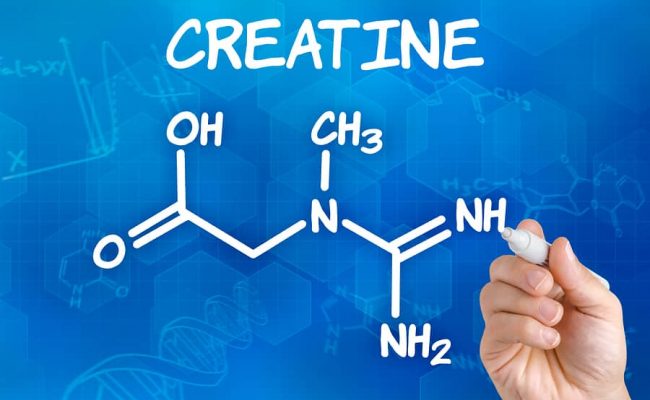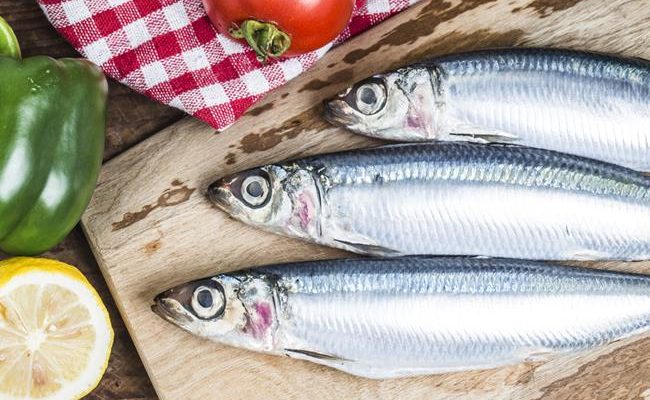
Pork is the number one meat consumed in the world, but is it healthy for you? There isn’t a simple answer for determining if pork would be considered healthy or not. It can depend on the cut of pork, how much you are eating, how the pork is cooked or processed, and how the pig was raised.
Something like a pork tenderloin is quite lean and low in calories while being a good source of protein.
Pork chops, loins, roast, etc. are sources of zinc, B6, B12, magnesium and iron. So, incorporating pork into your diet can help you reach the recommended intake of these nutrients and provide a lean protein source.
On the other hand, pork, along with all red meat, has received some negative press recently.
According to the American Institute for Cancer Research (AICR), processed red meat, like bacon, may increase risk for certain cancers.
It is also recommended to limit your overall red meat intake, including pork, to no more than 18 ounces per week.
See also: How to make red meat as healthy as possible
Another potential concern with pork is cooking method. High heat cooking methods can increase risk of forming potential carcinogens in pork or other red meat.
Cooking pork to the proper temperature is important to lower risk of foodborne illness. It is important to eat pork that has been properly cooked and stored.
Pork nutrition
Pork tenderloin is considered extra lean with less than 5 grams of fat. In fact, it has about the same calorie content as skinless chicken breast.
Six cuts of pork are considered lean with under 10 grams of total fat per serving.
Lean cuts of pork include: sirloin pork chop, top loin chop, 96% lean ground pork, top loin roast, bone in center pork chop and bone in rib pork chop (1).
A three ounce serving of pork loin or roast provides about 22-23 grams of protein, 44% DV for protein.
Three ounces of pork loin/roast can be considered a nutrient dense food because it provides many vitamins and minerals including (2):
11% DV potassium
14% DV zinc
54% DV thiamin
19% DV riboflavin
37% DV niacin
8% DV B12
37% DV B6
A serving of processed pork such as: bacon, salami, ham, etc. will be higher in calories, fat, sodium and lower in protein, vitamin and mineral content.
Therefore, if you are eating pork, limit your intake of these processed items.
Food safety concerns with pork
Under cooked pork can be a potential source of parasite Trichinella spiralis, E coli, Salmonella, Listeria, Staph aureus or Yersinia enterocolitica (4).
It is recommended to cook pork to an internal temperature of 145 degrees Fahrenheit then rest for 3 minutes to lower risk of food borne illness.
Ground pork should be cooked to an internal temperature of 160 degrees Fahrenheit.
When handling raw pork, you should wash your hands and any utensils used before handling any other food or touching any other surfaces.
Consuming properly cooked pork significantly lowers risk for food borne illness.
However, consuming raw or under cooked pork could be considered bad for your health.
How is the pig raised?
Antibiotics can be given to pigs as a prevention or treatment for illness.
If pigs are given antibiotics, they must go through a certain time period before being slaughtered for the antibiotics to leave their system.
According to the USDA, there is a very low percent of violations of not honoring the time allowance after giving antibiotics.
A concern with giving animals antibiotics is that doing so can increase the development of antibiotic resistant pathogens.
A Consumers Reports study (5) found antibiotic resistant strains of bacteria from tested pork samples.
If someone gets sick from an antibiotic resistant strain of bacteria, they will need stronger antibiotic drugs to fight off infection.
Pigs raised in large, conventional farms may have to live in unhygienic conditions which may warrant a higher dose of antibiotics administered to the pigs.
Choosing USDA certified organic pork means the pigs were not given any antibiotics.
An Animal Welfare Approved/Certified Humane label means the pigs were given antibiotics only if they were sick.
Note that a “natural” label on pork products really doesn’t have a clear definition and doesn’t really mean anything significant.
Red meat and cancer risk
The AICR (6) recommends limiting intake of all red meat to no more than 18 ounces per week.
They also recommend avoiding processed red meat as much as possible.
Processed red meat can include pork products that are salted, cured or smoked such as: bacon, ham, salami, hot dogs, sausages, etc.
These recommendations are in place because some research suggests there may be an association between red meat intake and risk for colorectal cancer.
Processed red meat especially may increase risk for stomach cancer; eating even a small amount daily may increase cancer risk.
In light of these recommendations, pork could be considered bad for health.
If you eat red meat, the goal is to limit intake to less than 18 ounces per week and severely restrict processed pork products.
Scientists suggest staying under the 18 ounce amount won’t significantly raise certain cancer risk.
Conclusion: How much pork and what else are you eating?
Can pork fit into a healthy diet? It could if you limit your red meat intake to less than 18 ounces per week.
It may also be of further health benefit to choose pork that has not been given any or very little antibiotics and choose lean or extra lean pork.
One concern shown in research from people who eat a lot of red meat, including pork, is they tend to eat less plant foods.
If you incorporate pork into your diet, choose lean cuts and limit processed products like bacon and sausages.
Lean pork is a nutrient dense food that can provide vitamins, minerals and a good protein source.
However, what is also important besides pork intake is to also eat a wide variety of fruits, vegetables, whole grains, nuts, seeds and legumes.










